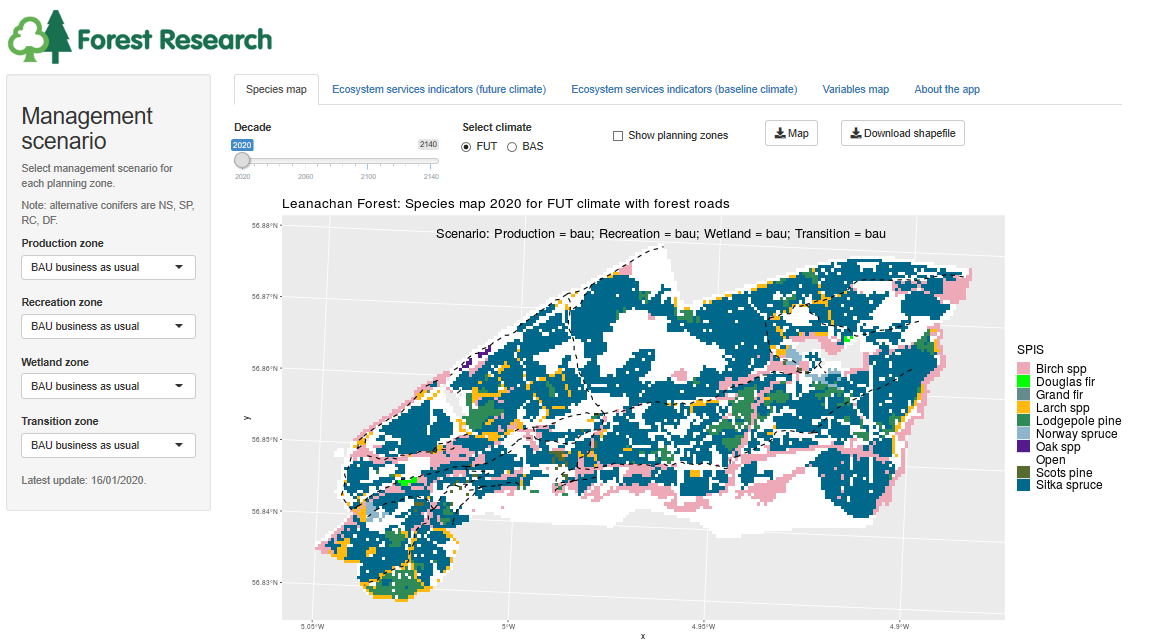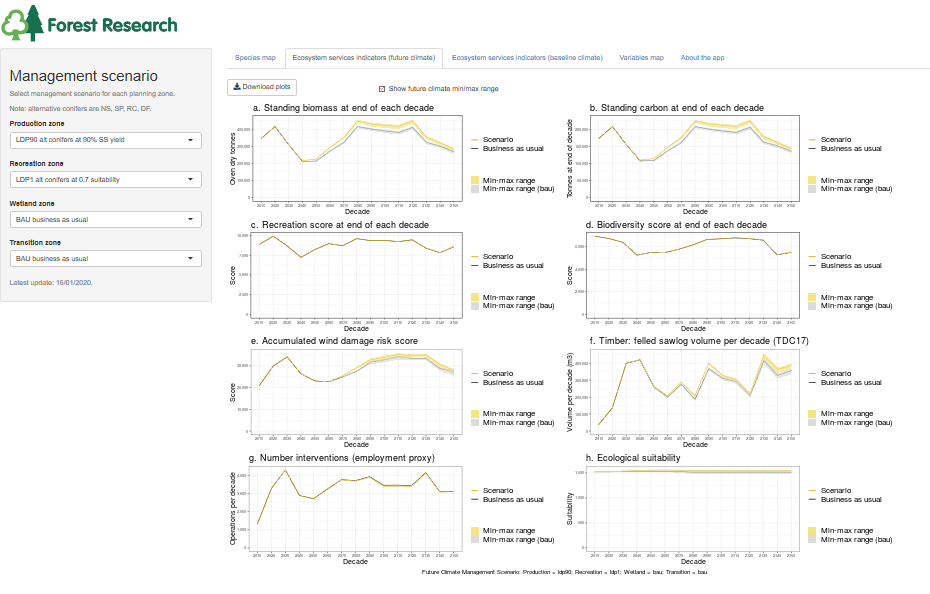Summary
Land use change has been one of the major influences on UK forests and wooded landscapes over the last 50 years, with the future likely to be affected through changes in climate and by population pressure. Scenario analysis has become an increasing area of interest to explore potential future change and elements of uncertainty, providing a valuable analytical device for within a spatial context. Scenario analysis allows exploration of potential future change and elements of uncertainty within a spatial context to support decision- and policy-making processes. When combined with participatory modelling, it provides a means of engaging stakeholders to increase identification of management interventions and sustainable outcomes.
This research aims to help land managers and policymakers anticipate how future changes may affect the delivery of the goods and benefits from woodlands.
Exploring scenarios of forest diversification and ecosystem services impacts
This page describes our work carrying out research into the delivery of forest ecosystem services at the forest scale.
Why
There is a sectoral requirement for quantifying the ecosystem services benefits (like timber, carbon sequestration, recreation and other social and cultural benefits) and their direction of change in response to land use and management decisions. At the same time, there is an increased realisation of the importance of being able to articulate and demonstrate what changes in the system (like additional planting, changing climate or changing management/planting decisions) may have on these benefits using scenarios. Results can inform forest planning, long term strategy development, policymakers.
Latest Updates
Where and when
We have used a modelling framework to simulate forest growth through time by dynamically coupling five Forest Research models. The simulation is spatially explicit, using the best soil and climate variables. The method is scalable, and has been tested at forest, region and national scale. To capture change over long periods the simulations run until the end of the century (which is the period we have climate data for), and we have also extended it into the middle of the next century to see how very long term trends play out for forests under long rotations of 100 years or more.
How much
The dynamically coupled modelling produces annual ecosystem services and other resilience indicators (including harvested wood products, standing carbon volume, recreation, biodiversity (deadwood), and a wind risk indicator). Values are accumulated for each decade and plotted over time. Forests are grown according to multiple scenarios and the results are visualised using a web app built in R Shiny (click here for Leanachan forest, Lochaber, Scotland).

We have used land management plan scenarios developed with a forest manager to test the effect of species diversification from Sitka spruce on timber yield and other benefits. Alternative management approaches can be applied to different primary objectives zones within the forest, and the sum of ecosystem services benefits are calculated and displayed for both baseline and future climates.

Next steps
Extend the method to incorporate new forests in the landscape, to support delivery of policies and develop long term monitoring approaches which have the capability of testing policy scenarios on ecosystem services outcomes.
Research Objectives
Exploration of the resilience of woodlands to future change by assessing how ecosystem service values and natural capital stocks of woodlands may be affected through:
a) the application of the UK National Ecosystem Assessment (UK NEA) scenarios at different scales
b) different management approaches, e.g. forest diversification through the application of forest management alternatives
Latest Update
This research has applied the UK NEA scenarios through a simulation approach to express likely changes to UK woodlands under six explorative storylines at national, regional and local scales. The scenarios show differences in species diversification and management at the different scales, with consequences for the provision of goods and benefits from the woodlands.
